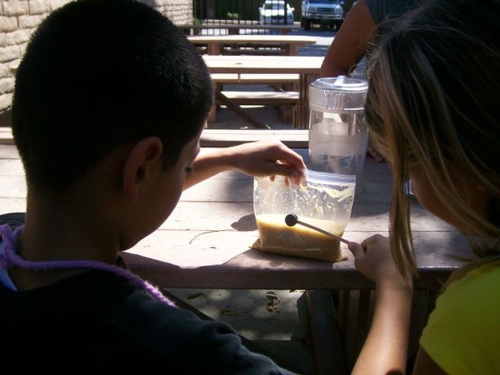Sixth-grade students from Hamasaki Elementary School in Los Angeles were surprised to learn that they could actually see iron in their breakfast cereal through a simple experiment involving ground up cereal, water and magnets. These same students also found out that learning about science could be fun.
The students were taking part in a celebration of 4-H National Youth Science Day at UC Cooperative Extension in Los Angeles County Sept. 24. LA County advisors and program coordinators teamed up to give the students the opportunity to learn about nutrition, physical activity and the environment through fun, interactive science-based activities. The students learned about the body’s need for iron in the diet, what types of foods are rich in iron and how to identify these foods by reading the nutrition facts label.
For the experiment, the students were given plastic bags filled with ground up, iron-fortified breakfast cereal and water. They learned that the small bag represents their stomachs after consuming a big bowl of iron-fortified cereal. The kids were instructed to move a magnet slowly across the outside of the bag. Lo and behold, they observed tiny black particles trailing behind the magnet – they could actually see the iron in the cereal mixture. The students learned that once the cereal makes its way into the stomach, the iron is separated and dissolved by stomach acid and absorbed into the body.
Everyone was eager to take a turn with the magnet, including the teachers and chaperones.
Ellen Sandor and Cynthia Avila, youth Food Stamp Nutrition Education Program and and Expanded Food and Nutrition Education Program program coordinators, and Brenda Roche, the nutrition, family and consumer sciences advisor, worked with the students to uncover the seemingly invisible mineral that is commonly fortified in many breakfast cereals.
Variations of this experiment are described on a number of different websites, including:
Other information presented to the students at the event included:
- Climate change by Keith Nathaniel, the 4-H Youth Development advisor
- Environmental and watershed conservation by Sabrina Drill, natural resources advisor
- Physical activity and the science of physiology by Carly Marino, coordinator of the Power Play Campaign
For more information about the event, contact Roche at bkroche@ucdavis.edu, (323) 260-3299.
Attached Images:
